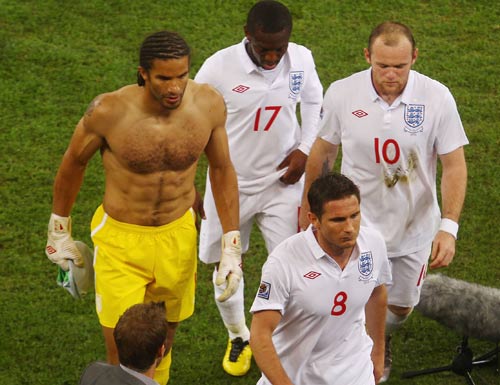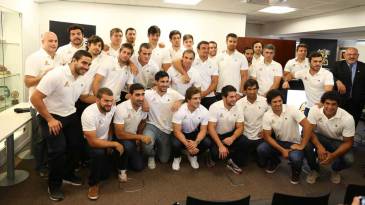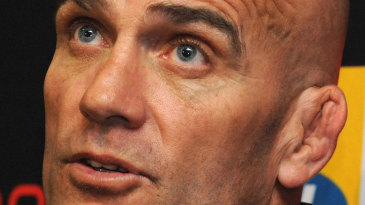
- News:
-
Hamilton makes peace with McLaren
- News:
-
Hamilton frustrated by 'silly' Webber
- Report:
-
Button storms back with thrilling win
- Race:
- Australian Grand Prix
- Championship:
- FIA Formula One World Championship
- Drivers:
- Jenson Button
- |
- Lewis Hamilton
- Teams:
- McLaren
The Australian Grand Prix offered a glimpse of how Formula One in 2010 was supposed to be. Differing strategies meant that once the track dried some drivers chewed through two sets of slick tyres while others nursed just one. This resulted in a big performance difference between cars, which in turn offered up banzai overtaking manoeuvres and a genuinely exciting finish behind race leader Jenson Button.
The downside is that all that excitement was not a result of the 2010 rules, but instead some persistent drizzle in the 15 minutes leading up to the race. This presents a problem, because even Bernie Ecclestone can't bend the ear of the weather gods week-in-week-out. Without the rain, the Red Bulls would have likely raced into the lead, pitted somewhere around lap 25 for hard tyres and, reliability permitting, finished a comfortable one-two.
Fortunately the wet track surface spared us such tedium and ensured all 24 cars started on intermediates, crucially bypassing the rule requiring drivers to use both hard and soft slick tyres during the race. When the track dried it presented the teams with a dilemma: Do you make one set of softs last over 50 laps or rip into two sets in separate 25-lap blasts? Essentially it was a choice between endurance racing and sprint racing.
McLaren hedged its bets as Button went the endurance route and Hamilton the sprint. The different approaches matched the drivers' styles - Button using his smooth technique to go fast without taking too much life out of the tyres and Hamilton coming through the field by any means possible, torturing his rear left tyre in the process. It was an intra-team battle worthy of Alain Prost and Ayrton Senna in the 1980s or Jody Scheckter and Gilles Villeneuve 1970s; one driver playing the long, percentage game while the other went balls-to-the-floor, relying on nothing but sheer talent to bully the car through the field.
Button emerged victorious but only by the virtue of his decision to change to slicks early on - a call that he later admitted had more to do with the state of his intermediates after six laps than driver intuition. Rather tellingly the top four drivers were all on one-stop strategies, a point not lost on Hamilton as he screamed over the car-to-pit radio: "Whose call was it to bring me in? Fricking terrible idea!"

Hamilton's pace was very impressive. His best lap was over a second faster than Alonso's, and after his second pit stop, he closed the gap from 22 seconds to half a second in just 15 laps. Those statistics are even more incredible when you consider Hamilton had been the best part of a second off Alonso during qualifying. With the track dry by that stage of the race, the thrill of the chase was entirely down to the fresher rubber on the McLaren. It's a level of excitement that we simply did not see in Bahrain.
So what does this tell us? Mainly that rain improves the show, but also that if a quick fix is needed it should take the form of eliminating the rule that demands drivers use both hard and soft tyres at each race. The Bridgestones are so durable this year that drivers would be faced with a genuine dilemma between going the whole race on one set of tyres or breaking their grand prix into two sprints by making a single stop. It may result in less action in the pits but it could create a fair bit more on the track ... at least until a serious revision of the tyres can be made next year.
Laurence Edmondson is an assistant editor on ESPNF1
© ESPN Sports Media Ltd.
 Laurence Edmondson is deputy editor of ESPNF1 Laurence Edmondson grew up on a Sunday afternoon diet of Ayrton Senna and Nigel Mansell and first stepped in the paddock as a Bridgestone competition finalist in 2005. He worked for ITV-F1 after graduating from university and has been ESPNF1's deputy editor since 2010
Laurence Edmondson is deputy editor of ESPNF1 Laurence Edmondson grew up on a Sunday afternoon diet of Ayrton Senna and Nigel Mansell and first stepped in the paddock as a Bridgestone competition finalist in 2005. He worked for ITV-F1 after graduating from university and has been ESPNF1's deputy editor since 2010

